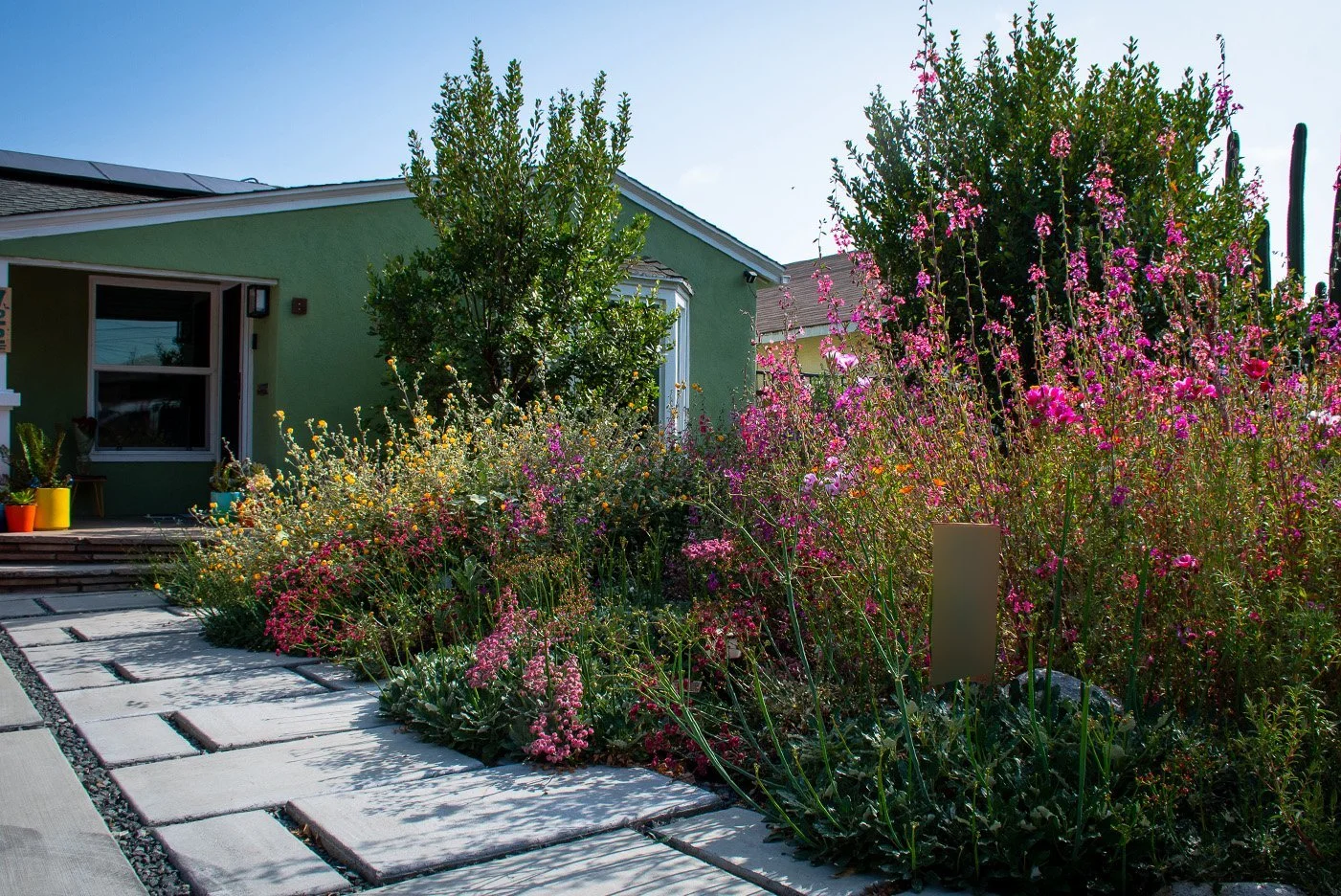Transforming Your Yard: Installing a Native Plant Landscape in Los Angeles
A native plant garden in full bloom during the 2025 Theodore Payne Garden Tour
If you're looking to make your outdoor space more beautiful, eco-friendly, and low-maintenance, there's no better option than planting a native garden in your Los Angeles yard. Native plants are naturally adapted to our Mediterranean climate, which means they thrive with minimal water, support local wildlife, and reduce the need for fertilizers or pesticides.
Here’s what you need to know to get started:
🌞 Why Choose Native Plants?
Native plants are the quiet heroes of sustainable landscaping. Here’s why more and more Angelenos are ditching traditional lawns in favor of local flora:
Drought Tolerant: Once established, native plants require little to no supplemental water.
Low Maintenance: No need for heavy pruning, fertilizing, or pest control.
Supports Biodiversity: Native flowers and shrubs attract pollinators like butterflies, hummingbirds, and bees.
Fire-Wise: Many native plants are more fire-resistant than imported varieties—critical in SoCal.
🛠 Step-by-Step: How to Install a Native Garden
1. Plan & Design Your Space
Start by assessing your yard’s sun exposure, soil type, and drainage. Sketch a basic layout or consult a landscape designer who specializes in native plants. Aim to group plants with similar water and light needs.
2. Remove the Lawn (If You Have One)
Removing turf grass will save thousands of gallons of water per year. You can sheet mulch it with cardboard and compost, or remove it manually.
3. Prep the Soil
Native plants don’t require overly rich soil—in fact, they often do better in lean, well-drained soil. Lightly loosen the soil and avoid using fertilizers.
4. Choose Your Plants
Some top native picks for Los Angeles include:
California Poppy (Eschscholzia californica) – cheerful orange flowers
Toyon (Heteromeles arbutifolia) – evergreen shrub with red winter berries
Manzanita (Arctostaphylos spp.) – beautiful bark, low water needs
Cleveland Sage (Salvia clevelandii) – fragrant and pollinator-friendly
Buckwheat (Eriogonum spp.) – excellent ground cover
5. Install Smart Irrigation (Temporarily)
Drip irrigation or soaker hoses are ideal for getting your plants established. After the first year, many natives can survive on seasonal rainfall alone.
6. Mulch and Maintain
Mulch helps retain moisture and suppress weeds. Use organic mulch like bark or wood chips and avoid piling it up around the plant bases.
🌱 Spotlight: The Theodore Payne Foundation
No conversation about native plants in Los Angeles is complete without mentioning the incredible work of the Theodore Payne Foundation for Wild Flowers and Native Plants.
Located in Sun Valley, this nonprofit organization has been a cornerstone of the native plant movement for over 60 years. Named after horticulturist and early conservationist Theodore Payne, the foundation promotes the understanding and use of California native plants through:
A Premier Native Plant Nursery: Open to the public, offering a wide variety of locally appropriate species.
Workshops & Classes: Learn everything from garden design to plant ID to sustainable landscaping practices.
Garden Tours & Events: Their annual Native Plant Garden Tour is a must-see for inspiration.
Advocacy & Education: They work with schools, municipalities, and homeowners to promote native landscaping citywide.
Whether you're just starting your garden or looking to expand, the Theodore Payne Foundation is an invaluable resource and community hub for native plant lovers.
👉 Learn more at: theodorepayne.org
💧 Bonus: Rebates & Resources
Did you know the Metropolitan Water District and LADWP offer rebates for turf removal and native plant landscaping? These programs can help offset the cost of your transformation.
Great places to shop and get inspired:
Theodore Payne Foundation (Sun Valley)
California Botanic Garden (Claremont)
Tree of Life Nursery (San Juan Capistrano)
🌼 Final Thoughts
Swapping out your thirsty lawn for a native plant garden isn’t just good for the environment—it’s a lifestyle shift that embraces the beauty of Southern California’s natural heritage. You'll spend less time watering and mowing, and more time enjoying a vibrant, living landscape that changes with the seasons.
Thinking about upgrading your outdoor space? Your dream native garden might be closer (and easier) than you think.






